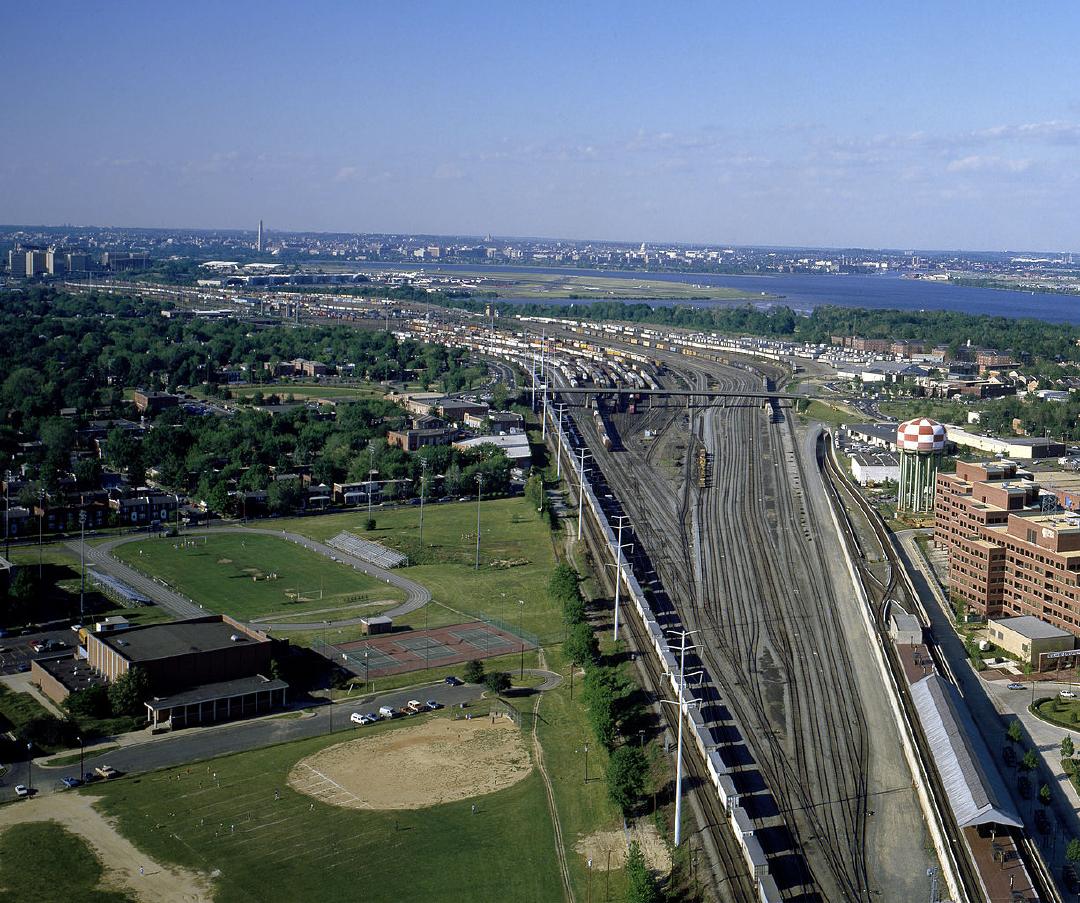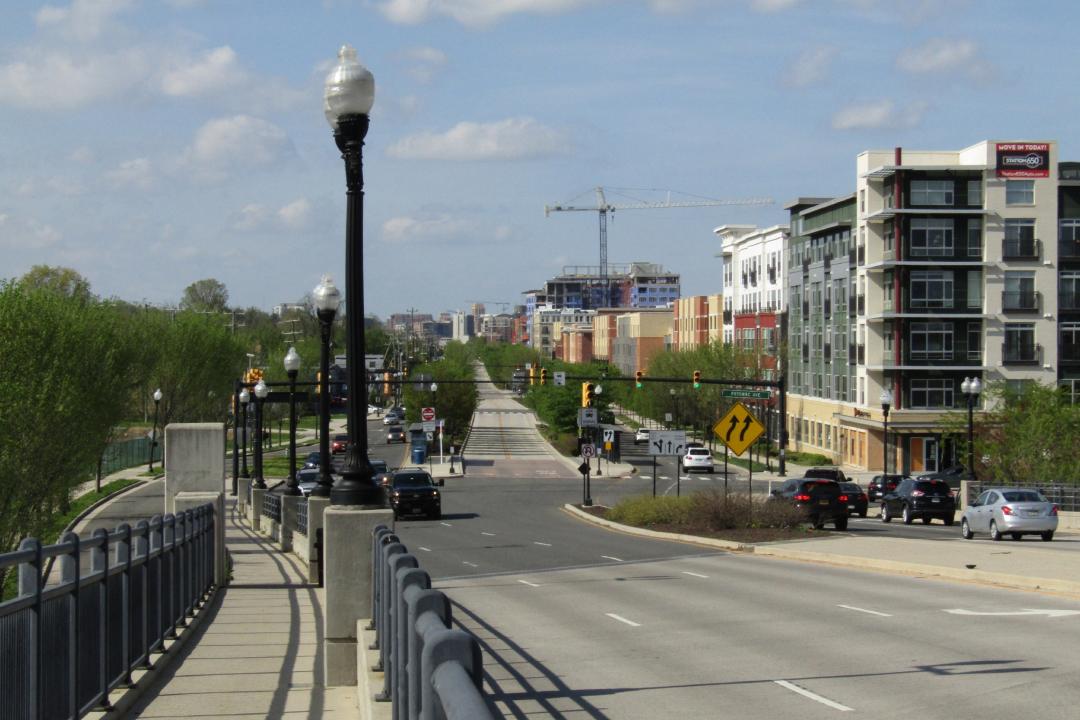Potomac Yard

It opened in 1906, spanning approximately 2 miles in length with 52 miles of track, and it served the needs of six railroad companies.
By the end of the 19th century, the United States had nearly 130,000 miles of railroad tracks, with many of them concentrated along the eastern seaboard. Railroads struggled with the increasing number of freight trains and cars that needed to be transported to different destinations.
To alleviate congestion in smaller rail yards from Pennsylvania to North Carolina, railroad companies constructed a single, large rail yard on what is now the boundary between Arlington County and Alexandria County. This rail yard was situated along a busy railroad track between Baltimore and Richmond and was named Potomac Yard. It opened in 1906, spanning approximately 2 miles in length with 52 miles of track, and it served the needs of six railroad companies.
Around the clock, regardless of the weather, brakemen and their locomotives switched or "classified" cars based on their final destinations. Potomac Yard provided all the necessary facilities for trains of that era, including refueling points for coal, diesel oil, and water for steam engines. It also had various workshops, bunkhouses, and kitchens for rail crews. Livestock pens, storage sheds, and warehouses were available as well. The entire yard covered 2.5 miles in length and encompassed 450 acres. Additionally, an ice factory supplied blocks of ice for cars carrying perishable goods.
During the Second World War, Potomac Yard played a crucial role, employing nearly 1,500 people. For many years, it served as the largest employer for residents of surrounding areas such as Del Ray and St. Elmo, which experienced rapid growth.
In the early 20th century, electric power was introduced, and by the 1950s, new technologies gradually replaced many manual labor jobs. For instance, at Potomac Yard, hand-operated track switches were converted to electromechanical devices, remotely controlled from a central console. This change made train assembly more efficient, requiring fewer personnel.
However, handling 1,400 cars daily had its drawbacks. One significant issue was occasional spills of hazardous liquids, such as acids and petroleum products.
By 1983, Potomac Yard remained as busy as ever. In fact, John Newbauer, the president of the Richmond, Fredericksburg & Potomac Railroad operating the yard, stated that it would continue to be a "very important interchange facility for the next 18 or 20 years, probably even beyond that."
Nevertheless, other forms of commercial transportation were becoming more profitable, and by 1989, Potomac Yard was closed. The land it occupied had become too valuable for the neighboring counties to be occupied by railroad tracks. The proximity of Washington National Airport also played a role in this decision.
Redevelopment started in the early 1990s, after extensive cleanup of the ground, heavily contaminated with diesel fuel, oil, and heavy metals. In 1997 a strip mall with several big box stores was completed. That was followed by residential and office buildings.
Today, the former rail yard has transformed into a highly developed urban area, featuring apartment buildings, townhouses, shops, restaurants, and a large park. It boasts a newly built Washington Metro station and dedicated rapid bus lanes that connect it to the popular tourist attraction of Old Town Alexandria on one side and the bustling commercial hub of Crystal City on the other. The Pentagon is located nearby, while Washington, D.C. is only minutes away. Passengers landing or taking off from Washington National Airport can still observe three railroad tracks and two Metro tracks running between the developed area and the Potomac River. This is a far cry from the once sprawling 62-track Potomac Rail Yard.
Images

